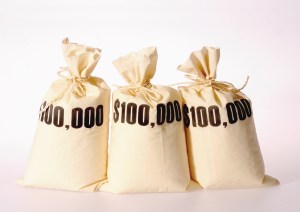
Let’s start with an example
John, a 55-year-old South African tax resident, buys a collection of paintings on 21 March 2003 from an art gallery in Johannesburg. As an art lover, John bought the paintings for purposes of enjoyment and its artistic value. He paid R200,000 for the collection and R20,500 to transport it to Cape Town. Six years later he sold the paintings for proceeds of R350,000.
Basic principles of CGT
‘Base cost’ and ‘proceeds’ are very important when calculating CGT. ‘Base cost’ refers to the amount John incurred to acquire the paintings while ‘proceeds’ is the amount he received when disposing of the paintings.
In our example, the price of the paintings and the cost to transport them would constitute John’s base cost which is R220,500.
CGT is calculated as the difference between the proceeds (R350,000) and the base cost (R220,500). The capital gain resulting from the sale of the paintings would therefore be R129,500. However, this is not the amount on which John is taxed. SARS gives an annual exclusion of R40,000 per year provided that the paintings were held in John’s name.
John’s capital gain of R129,500 is then reduced with R40,000 resulting in a taxable amount of R89,500. This taxable amount multiplied by the inclusion rate of 40% is what ultimately gets added to John’s income and taxed as normal income. In this instance that amount is R35,800.
It’s worth noting that CGT is not separate from normal income tax. An amount (as determined above) gets added to your income and is taxed according to your appropriate tax rate as per the relevant tax bracket. The R35,800 is therefore subject to income tax at John’s tax bracket. Currently, the highest effective tax rate for capital gains is 18%.
Assets bought pre-1 October 2001
Let’s consider a scenario where John bought the paintings on 19 March 1996 i.e., before CGT came into effect. Here our calculation would look a bit different as we need to allocate a valuation-date value to the paintings. In other words, the value of the paintings on 1 October 2001 needs to be determined. Taxpayers are not subject to the growth on assets before 1 October 2001.
In this scenario John may adopt one of the following alternatives as the valuation-date value:
- The market value of the painting collection on 1 October 2001 provided that the collection has been valued by 30 September 2004 i.e., three years from the valuation date. Let’s assume a market value of R400,000 and allowable expenditure after the valuation date of R100,000.
Here John adopts the market value of the painting collection as the value on 1 October 2001, to the extent that the proceeds (R350,000) do not exceed its market value (R400,000), John would have to substitute as its valuation-date value those proceeds (R350,000) less the allowable expenditure incurred after the valuation date (R100,000).
- 20% of the proceeds (R350,000), after deducting from the proceeds the allowable expenditure incurred after valuation date (R100,000).
- The time-apportionment base cost of the asset
Personal-use assets
CGT comes into effect when the proceeds gained from the disposal of a capital asset exceeds the base cost. Any capital gain or capital loss that results from the disposal of a personal-use asset (“PUA”) can be disregarded.
So what is a PUA? In simple terms, a PUA is any asset that is used for purposes other than trade. If an artwork collection is acquired and held purely for purposes of enjoyment rather than to realise a profit when selling the collection, it will be regarded as a PUA. PUA would also include items such as jewellery, household furniture and effects, stamp collections, etc.
Any capital gain or capital loss that may arise after the disposal of a painting or the collection in its entirety would not result in any CGT consequences.
Tax Harvesting
Tax harvesting is not explicitly prohibited in South Africa. Each year a taxpayer is entitled to an annual exclusion of R40,000. Where no assets are sold within a particular year of assessment the taxpayer effectively “loses out” on this annual exclusion. In order to utilise the exclusion provided by SARS, many taxpayers sell assets where the gain will be equal to R40,000. In doing this one needs to be mindful of anti-avoidance provisions, especially those aimed at listed shares.
Tax Tuesday
Being tax efficient is an important part of great financial management. In this blog, a group of South African tax experts at AJM Tax share their tips and explanations on tax issues. Learn everything you need to know about tax, from deductions you never knew about to retirement savings and capital gains. The first Tuesday of every month is Tax Tuesday.

